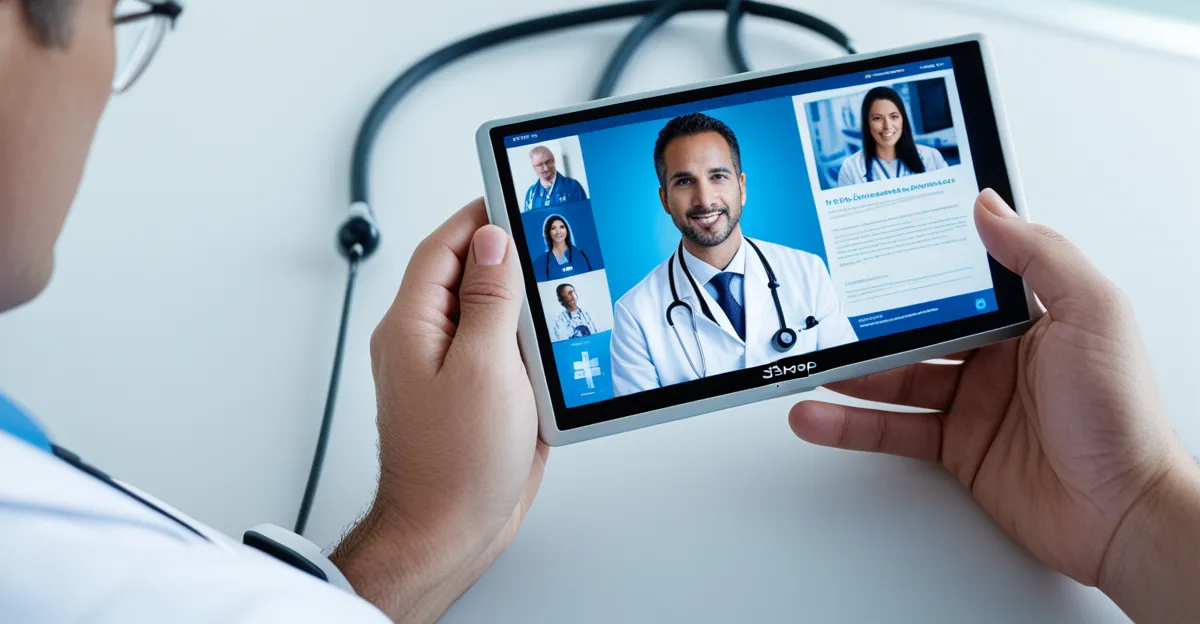Current Landscape of Telemedicine in the UK
Telemedicine adoption UK has rapidly transformed healthcare delivery across both the NHS and private sectors. The NHS telemedicine services have become integral in ensuring continuous patient care, especially following increased demand due to the COVID-19 pandemic. Digital health trends UK showcase a shift toward virtual consultations, remote diagnostics, and e-prescriptions.
Key digital tools driving this adoption include video consultation platforms, mobile health apps, and online patient portals that facilitate seamless communication between patients and healthcare providers. These platforms enhance both accessibility and convenience, addressing challenges like travel and waiting times.
This might interest you : How does the UK plan to tackle healthcare inequalities?
Recent statistics reveal a significant rise in telemedicine usage, with NHS telemedicine consultations increasing by over 50% in some regions during 2023 alone. This uptake reflects broader UK digital health trends, where patients and providers increasingly favour remote health interactions due to time efficiency and safety concerns.
The current landscape strongly supports telemedicine integration, highlighting digital solutions as vital to the UK’s ongoing healthcare modernization efforts.
Also to discover : How Does the UK Ensure Public Health and Safety Measures are Effective?
Technological Advancements Driving Change
Cutting-edge healthcare technology UK is powering a new era of telemedicine innovations. Advanced remote monitoring tools enable clinicians to track patient vitals in real time, reducing hospital visits and promoting proactive care. For example, wearable devices transmit continuous data, allowing early detection of health issues and timely intervention.
Artificial intelligence is transforming digital diagnostics with its ability to analyze medical images and patient data swiftly, assisting NHS telemedicine services in delivering accurate diagnoses remotely. This integration streamlines workflows, supporting faster clinical decisions.
Expanding telehealth infrastructure is another critical element. Enhanced broadband access across the UK ensures that even rural areas benefit from reliable connections, addressing a major barrier in telemedicine adoption UK. These improvements facilitate smooth video consultations and data sharing between patients and providers.
Additionally, emerging communication tools—including secure messaging platforms and virtual care apps—enhance patient-provider interaction, making healthcare delivery more responsive and personalised. This blend of innovative technology and expanded access underpins sustained growth in the UK’s telemedicine landscape.
Benefits of Telemedicine for Patients and Providers
Telemedicine benefits UK healthcare by significantly improving healthcare accessibility, especially for rural and underserved populations. Patients who previously faced travel barriers can now access specialist consultations remotely, making care more inclusive. This inclusivity fosters timely interventions, reducing complications from delayed treatments.
Efficiency in healthcare delivery is another crucial benefit. Virtual consultations cut down waiting times and streamline appointment scheduling, allowing providers to manage larger patient volumes without sacrificing quality. This enhances service capacity and patient satisfaction.
Moreover, telemedicine supports continuity of care by enabling regular follow-ups and timely monitoring through digital platforms. Patients engage more actively in managing their health, aided by easy access to medical records and symptom trackers.
In summation, telemedicine adoption UK promotes equitable care while boosting efficiency. By linking remote monitoring with real-time communication, it not only expands reach but also strengthens treatment adherence. Providers benefit from reduced no-shows and better workflow, while patients enjoy more convenient, personalised care. This synergy underscores telemedicine’s pivotal role in transforming healthcare delivery across the UK.
Challenges and Barriers to Telemedicine Expansion
Telemedicine adoption UK faces several telemedicine challenges UK that impact its wider implementation. A primary concern is data privacy healthcare, as sensitive patient information must be safeguarded against breaches and cyberattacks. Strict protocols are essential to maintain trust in NHS telemedicine services, often requiring continual updates to security measures.
Telehealth regulations UK add complexity, with variable licensing rules and compliance standards across regions slowing down cross-border telemedicine delivery. Navigating these regulatory frameworks demands substantial time and resources from providers.
Another significant barrier is the digital divide. Unequal access to reliable internet and modern technology limits telemedicine adoption UK, particularly in rural or socioeconomically disadvantaged communities. This disparity affects equitable healthcare accessibility and presents a challenge to fully integrating digital health trends UK.
Addressing these challenges requires coordinated efforts, including enhanced cybersecurity practices, streamlined policies, and infrastructure investments. Only then can telemedicine adoption UK achieve its potential across all demographics while ensuring secure, compliant, and accessible healthcare delivery.
NHS Initiatives and Policy Support
The NHS telemedicine initiatives form a critical backbone of telemedicine adoption UK, driving systematic digital transformation. Through digital health NHS programs, the NHS prioritizes integrating telemedicine into routine care, ensuring consistent standards across services. These initiatives include expanding virtual consultation services, developing interoperable health records, and promoting user-friendly digital platforms for patients and providers.
Government policies for telehealth UK have established clear frameworks that support telemedicine growth while addressing regulation and safety. These policies foster collaboration between the NHS, private sector, and technology developers, encouraging innovation while safeguarding patient data.
Significant funding is allocated to enhance infrastructure and provide training, empowering healthcare professionals to adopt telemedicine confidently. Training programs also address digital skills gaps, promoting effective use of telemedicine tools.
By combining policy support with practical investment, the NHS advances telemedicine adoption UK in a sustainable, scalable way. This alignment between NHS telemedicine strategies and government regulations underpins the widening access to digital healthcare, supporting the broader goals of digital health NHS modernization efforts.









